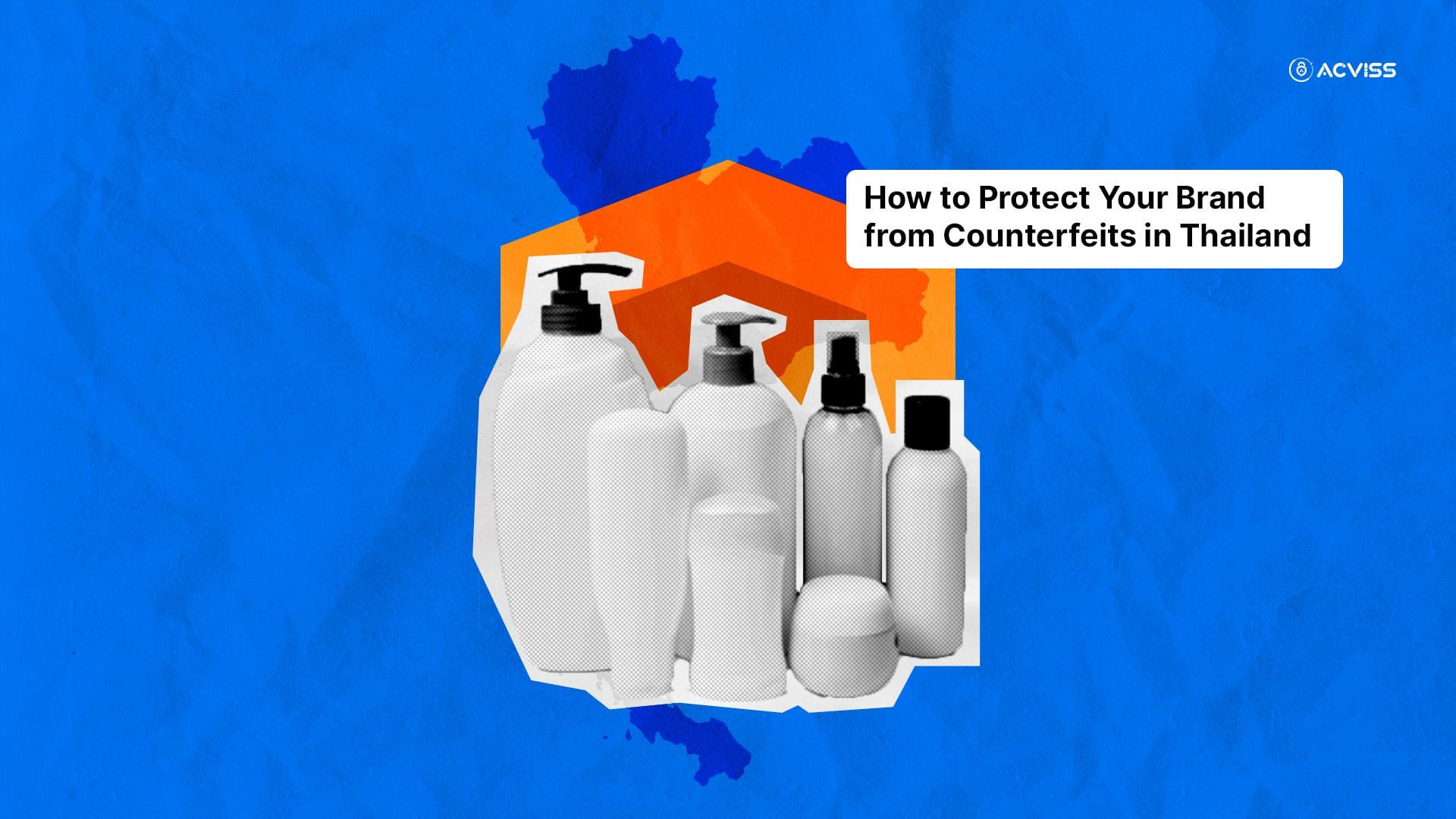Securing Your Brand in Thailand’s Market: Anti-Counterfeiting Solutions That Work

Counterfeiting is no longer a distant problem confined to global markets. For businesses operating in Thailand, both established brands and emerging players face mounting threats from counterfeiters who exploit supply chain vulnerabilities and consumer trust. Counterfeits do more than undercut revenue. They corrode brand reputation, put consumers at risk, and weaken confidence in the marketplace.
Thailand, with its vibrant manufacturing hubs and growing e-commerce ecosystem, has seen steady growth in counterfeit activities. The availability of inexpensive replicas, lax enforcement in certain regions, and the sophistication of counterfeit networks have prompted brand owners to reassess their strategies. Protecting intellectual property (IP), trademarks, and consumer trust is no longer optional. It is a fundamental business responsibility.
This article examines how brands in Thailand can build effective strategies for protection, both online and offline, with a focus on actionable anti-counterfeiting solutions.
The Scale of the Counterfeiting Problem in Thailand
Thailand has made notable progress in strengthening IP protection frameworks and stepping up raids against counterfeit goods. Yet, the challenge persists. Counterfeiters operate across multiple fronts:
- Street markets and offline retail: Physical spaces continue to thrive as hotspots for fake fashion, cosmetics, and electronics.
- Online marketplaces and social media platforms: Digital channels amplify the reach of counterfeiters, offering anonymity and scalability.
- Supply chain infiltration: Fake components and products enter legitimate supply chains, damaging traceability and trust.
A study by the Organisation for Economic Co-operation and Development (OECD) highlights that counterfeit goods comprise a significant proportion of international trade flows, with Southeast Asia serving as a key node. Thailand, being both a transit point and a consumption market, is uniquely vulnerable.
Why Brand Protection Must Be Multi-Dimensional

Protecting your brand in Thailand requires a layered approach. A single solution rarely covers the complexity of both online and offline risks. Businesses must integrate supply chain management, legal enforcement, product authentication technologies, and proactive monitoring into a cohesive plan.
The goals are clear:
- Ensure product authenticity at every consumer touchpoint.
- Maintain brand trust through visible verification.
- Secure intellectual property rights via trademarks and other protections.
- Build resilience through track and trace systems that reinforce product traceability.
Offline Strategies: Safeguarding the Physical Market
1. Strengthening IP Protection and Trademark Registration
The cornerstone of brand protection is legal ownership. Without registered trademarks and patents in Thailand, enforcement becomes difficult. Businesses must:
- Register trademarks promptly with Thailand’s Department of Intellectual Property.
- Extend protection to logos, slogans, and product packaging.
- Periodically review filings to cover new product categories.
Trademark protection not only empowers legal action but also deters counterfeiters who target unregistered marks.
2. Deploying Product Authentication Tools
Consumers buying offline need a reliable way to verify products instantly. Product verification labels play a crucial role here. For example, non-cloneable security codes like those offered through solutions such as Certify allow customers to check authenticity using a simple scan. This transforms every purchase into a moment of brand authentication and builds consumer confidence.
3. Supply Chain Controls and Track and Trace
Counterfeit infiltration often happens upstream. Establishing track and trace systems for product traceability can significantly reduce the risk. Manufacturers should:
- Implement serialisation at the unit level.
- Use tamper-proof packaging integrated with unique identifiers.
- Regularly audit distribution networks.
The objective is to build transparent supply chain management practices that leave little room for manipulation.
4. Training Distributors and Retail Partners
Local distributors and retailers can unintentionally become conduits for counterfeits. Conducting training sessions ensures that:
- Partners can spot counterfeit warning signs.
- They understand the importance of reporting suspicious activities.
- The brand message remains consistent across the chain.
Online Strategies: Defending the Digital Marketplace

The rapid growth of Thailand’s e-commerce and social media commerce channels has created new opportunities for counterfeiters. Online brand protection requires vigilance and dedicated technology.
1. Proactive Monitoring of Digital Platforms
Counterfeit sellers often advertise on platforms like Facebook, Instagram, TikTok, and e-marketplaces. Manual monitoring is inadequate. AI-driven brand protection solutions such as Truvissscan digital channels to identify fake listings, counterfeit ads, and fraudulent offers. Automated detection not only reduces human effort but also ensures quick takedown actions.
2. Enforcing Trademark Rights Online
Filing complaints on e-commerce platforms or social media is far more effective when trademarks and brand IP are registered. Having legal proof strengthens takedown requests and minimises delays in enforcement.
3. Engaging Consumers in Brand Verification
Consumers themselves can act as frontline defenders. Encouraging buyers to verify products before purchase creates a natural barrier to counterfeits. Brands can achieve this by:
- Integrating easy-to-use product authentication apps.
- Offering incentives for consumers who verify and report suspicious sellers.
- Promoting awareness campaigns about the dangers of counterfeit products.
4. Building a Visible Online Presence
Counterfeiters thrive in digital shadows. An active and visible brand presence across channels builds consumer trust. Clear communication about where to buy genuine products, verified seller lists, and official announcements makes it harder for counterfeiters to deceive.
The Role of Anti-Counterfeiting Technologies
Technological innovation lies at the heart of modern anti-counterfeiting solutions. From holographic seals to blockchain-powered traceability, the arsenal is expanding rapidly. For brands in Thailand, the following stand out:
- Digital verification codes that cannot be cloned.
- Blockchain-based track and trace for ensuring product traceability throughout supply chains.
- AI-driven detection systems that monitor marketplaces and remove fake listings in real time.
While technology is not a silver bullet, it acts as a force multiplier when combined with legal protection and human vigilance.
Building Consumer Trust Through Product Authentication

Counterfeits thrive on consumer uncertainty. By enabling product authentication at the point of sale, brands can flip the equation. When consumers know they can verify products instantly, counterfeiters lose ground.
This is why technologies like Certify, which provide a unique and non-cloneable product verification process, have gained traction. They empower consumers while giving brands valuable insights into buying behaviour and market penetration.
Integrated Brand Protection: The Future for Thailand
Thailand’s market conditions call for a balanced mix of offline enforcement and online brand protection solutions. No single tool can cover every loophole. Successful brands are those that combine:
- Legal safeguards such as trademarks and IP protection.
- Supply chain management with robust product traceability.
- Anti-counterfeiting technologies for authentication and monitoring.
- Consumer engagement strategies that reinforce trust.
By treating brand protection as a continuous process rather than a one-time action, businesses can stay ahead of counterfeiters.
Conclusion
The threat of counterfeits in Thailand is both real and evolving. Brands must protect not only their bottom line but also the trust of millions of consumers who rely on safe and authentic products. Through a combination of offline safeguards, online monitoring, and advanced anti-counterfeiting technologies, businesses can build resilience against counterfeiters.
Investing in brand protection solutions today ensures stronger IP protection, enhanced consumer confidence, and healthier supply chains tomorrow.
Interested to learn more? Get in touch with us.